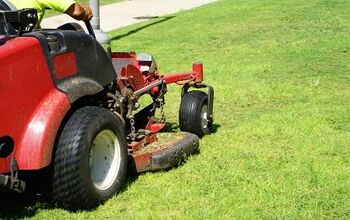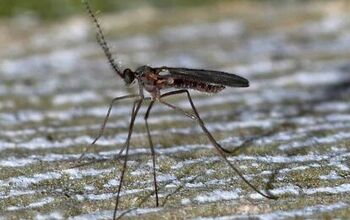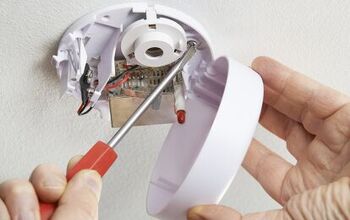Four Cat Grooming Tips That Affect Your House (And Furniture)

Cats are similar to dogs in that they can wreak havoc on your house when they become dirty. The last thing you want to do is find mashed, dirty litter in your carpet because you haven’t groomed your cat in a while. That’s why we put together an easy-to-follow guide highlighting the most essential cat grooming tips that affect your house.
You must regularly trim the sharp tips of your cat’s nails to protect your furniture, flooring, and even themselves. It’s also important to bathe your cat at least once every few months, as self-grooming isn’t typically enough. Brush your cats daily, if possible, to reduce loose hair messes and inspect their skin to make sure they’re healthy.
Nobody can blame you if you’d rather hire a professional groomer to bathe your cat and trim their nails. After all, in many cases it can take time and can be quite difficult . Follow along as we highlight four essential cat grooming tips that affect your house, furniture, and your cat’s health.
Four Cat Grooming Tips To Keep Your House Clean
Cat grooming isn’t always fun, but it’s necessary if you want to keep your cat healthy and your house clean. That said, figuring out where to start can be difficult while balancing work, home maintenance, and life’s obligations. However, you can keep your cat, house, and furniture clean if you stick to the following cat grooming tips.
1. Trim Their Nails
Many homeowners understandably procrastinate and hesitate to trim their cat’s nails. After all, cats can get quite cranky when you grab their paws, especially if they see nail trimmers. However, you must regularly trim your cat’s nails to keep your house clean and protect the furniture.
Ideally, you should trim your cat’s nails once or twice monthly, depending on how fast they grow. Doing so can reduce the amount of damage you find on your hardwood floors, carpets, rugs, and furniture. It can also help protect your cats from ingrown nails, which can be quite painful and hard to identify at first.
Ingrown nails can even become infected, so trimming your cat’s nails is a health matter. The best way to trim your cat’s nails is to approach them when they’re already relaxed and sitting down. Gently press your cat’s paw in the center and only cut the sharpest tips of the nails. Cutting the nails too short can harm them.
2. Regular Bathing
Many people who own cats and dogs bathe their dogs more frequently than their cats. After all, dogs roll around in dirt and other gross things, and it doesn’t take long for them to smell badly. Indoor cats may not smell badly at all, even if you never bathe them, so doing so may slip your mind.
However, you must consider that even an indoor cat can become dirty, as it spends a lot of time in its litter box. Litter boxes contain plenty of old liquid and solid waste, which can get stuck in their fur and paws. Your cat will drag these litter box remnants throughout your house, onto your furniture, and into your bed, whether you smell it or not.
That’s why you must bathe your cat at least 2 to 4 times per year. Some people bathe their cat monthly, which may be necessary if your cat spends time outdoors. It can be a frustrating process, so you can always hire a professional groomer to do your (literally) dirty work.
3. Brush Them
Unless you have a hairless cat, you probably struggle to keep up with the cat hair mess in your home. Cats shed hair throughout the day, and it typically sticks to whatever surface it lands on. You can minimize how much cat hair you find throughout the house if you regularly brush your cat.
Brushing your cat allows you to collect loose hair in the moment and dispose of it to contain the mess. That way, you won’t have to go through your house picking up loose cat hair in random locations. Cats shed hair at different rates, depending on factors such as breed, age, and overall health.
For example, you must brush long-haired cats daily to contain the mess and prevent the hair from getting matted. It’s still important to brush your short-haired cats at least once weekly, but they may not shed as often as long-haired cats. Doing so can make your cat-owner maintenance checklist much easier.
4. Inspect Their Hair
This next cat grooming tip is more about catching problems early than anything else. Regularly inspect your cat’s hair and skin to check for dirt, litter, fleas, and debris. This is just as much about your cat’s health as it is about keeping your house clean.
That’s why it’s a great idea to buy a flea comb, as it makes it easier to inspect your cat’s body. First, you must pet your cat, make it comfortable, and have it sit or lie down. Next, slowly run the flea comb through its hair one section at a time, to inspect it.
Look for dirty litter, fleas, matted hair, bug bites, debris, and dirt, then remove it as needed. This is especially important for outdoor cats, who are exposed to more dirt, debris, and wildlife. Schedule an appointment with a veterinarian if you see anything unusual that is worrisome.
What Can I Use To Wash My Cat?
You can only safely wash your cat if you use fragrance-free shampoos, or else you may irritate its skin and eyes. Some people use a baby shampoo, which are quite effective, but you can also find a cat-specific shampoo. It’s worth visiting your local pet store or even calling a groomer to see what products they recommend.
The key is to use lukewarm water, as hot water may harm them, stress them out, and make them leave the room. It’s also important to use a hand-held showerhead, so you can easily control the pressure and direction of the water.
Only leave 3 to 4 inches of water in the bathtub to ensure your cat feels safe. Continually reassure and pet your cat throughout the process as you untangle matted hair and gently scrub them. Carefully pat your cat dry and pay attention to their ears to ensure no water gets trapped inside. Don’t let the cat out of the bathroom until they’re mostly dry, or else you’ll have a mess to clean.
Do You Need To Groom Your Cat If It’s Grooming Itself?
Regular grooming is necessary even if your cat regularly grooms itself. Sure, cats in the wild groom themselves and don’t rely on anyone to help them stay clean. However, you must think about your domesticated cat’s health and your home’s cleanliness.
A dirty cat can quickly track dirt, debris, and even common pests, like fleas, throughout your house. If you don’t regularly groom your cat, you may not know know that it is filthy until you find huge messes. That doesn’t mean you must groom your cat daily, but you should at least perform basic grooming chores weekly.
Brushing them daily is a good idea, but you should at least brush your cat 2 to 3 times a week if you don’t have time for that. That way, you can minimize messes and keep an eye on their health. The condition of a cat’s hair and skin can tell you a lot about their health.
Summing It Up
Brush your cat’s hair daily and throw the loose hair away to reduce household messes. Trim your cat’s nails at least once per month, so they don’t scratch your furniture, floors, and walls. It’s also important to give your cat a bath every few months to loosen any matted hair and dirty litter on their paws.
Related Guides:

Nick Durante is a professional writer with a primary focus on home improvement. When he is not writing about home improvement or taking on projects around the house, he likes to read and create art. He is always looking towards the newest trends in home improvement.
More by Nick Durante













![10 Best Zero Turn Mowers – [2022 Reviews & Ultimate Buyer's Guide]](https://cdn-fastly.upgradedhome.com/media/2023/07/31/9070522/10-best-zero-turn-mowers-2022-reviews-ultimate-buyer-s-guide.jpg?size=350x220)











![Standard Dining Room Table Dimensions [for 4, 6, 8, 10 and 12 People]](https://cdn-fastly.upgradedhome.com/media/2023/07/31/9074335/standard-dining-room-table-dimensions-for-4-6-8-10-and-12-people.jpg?size=350x220)
